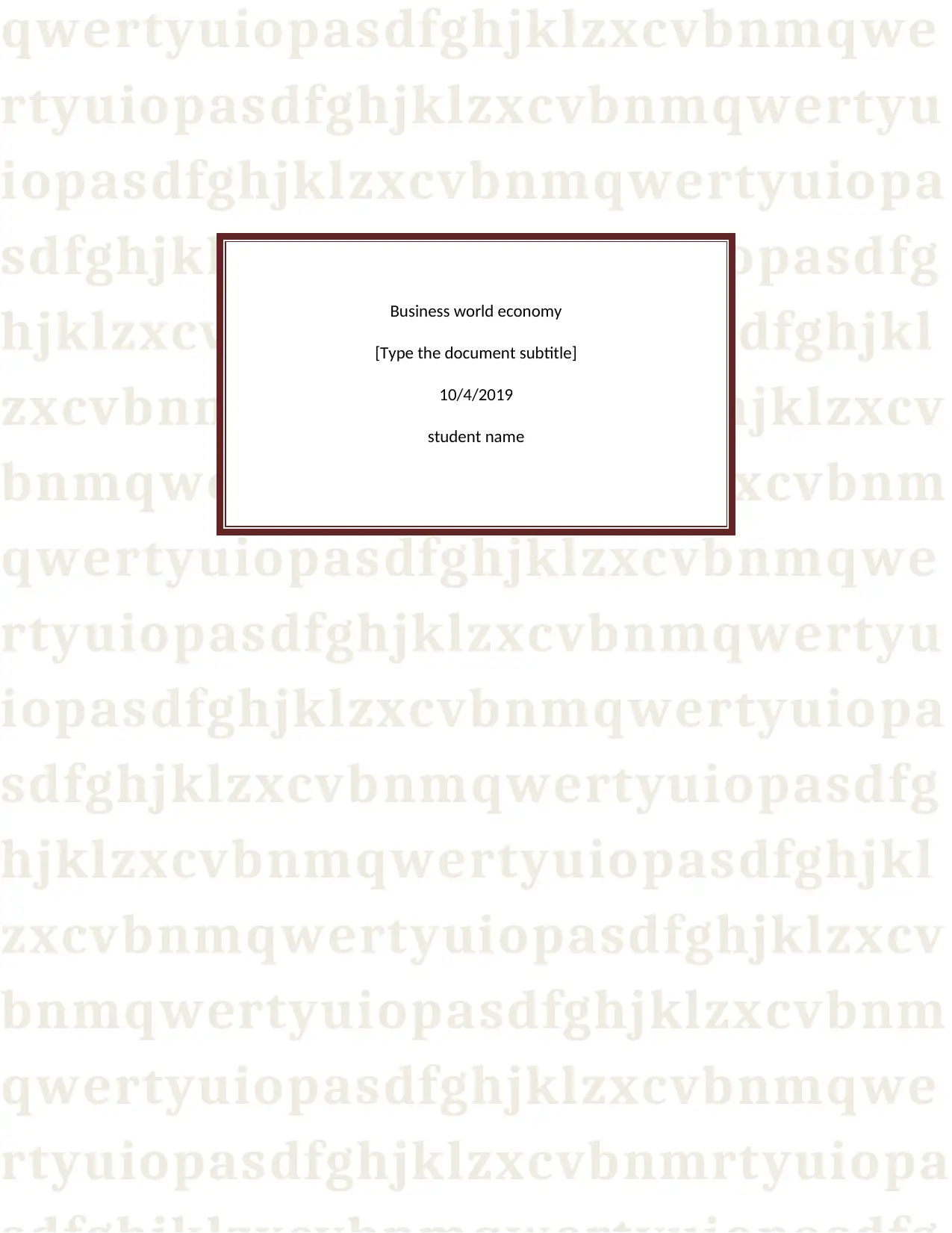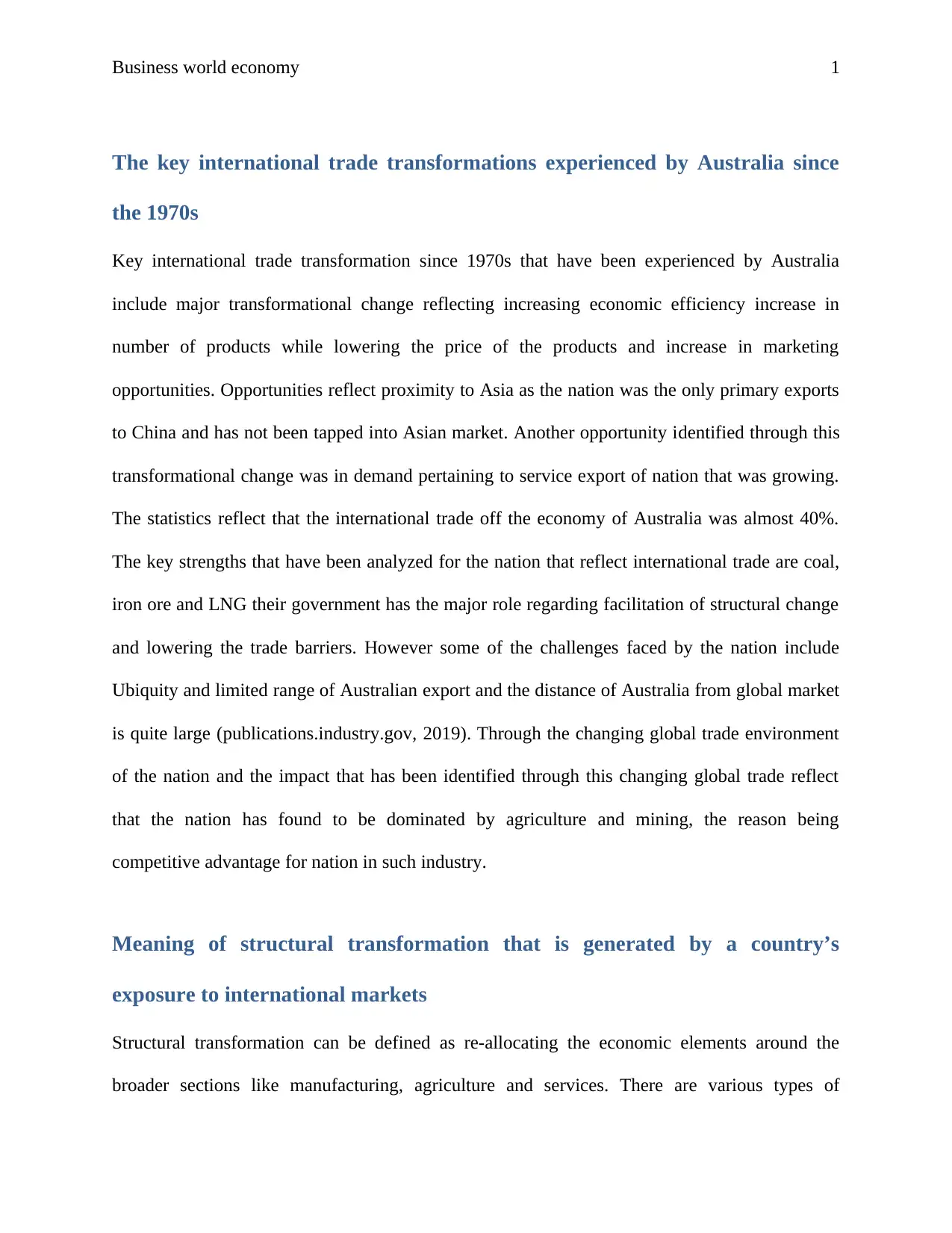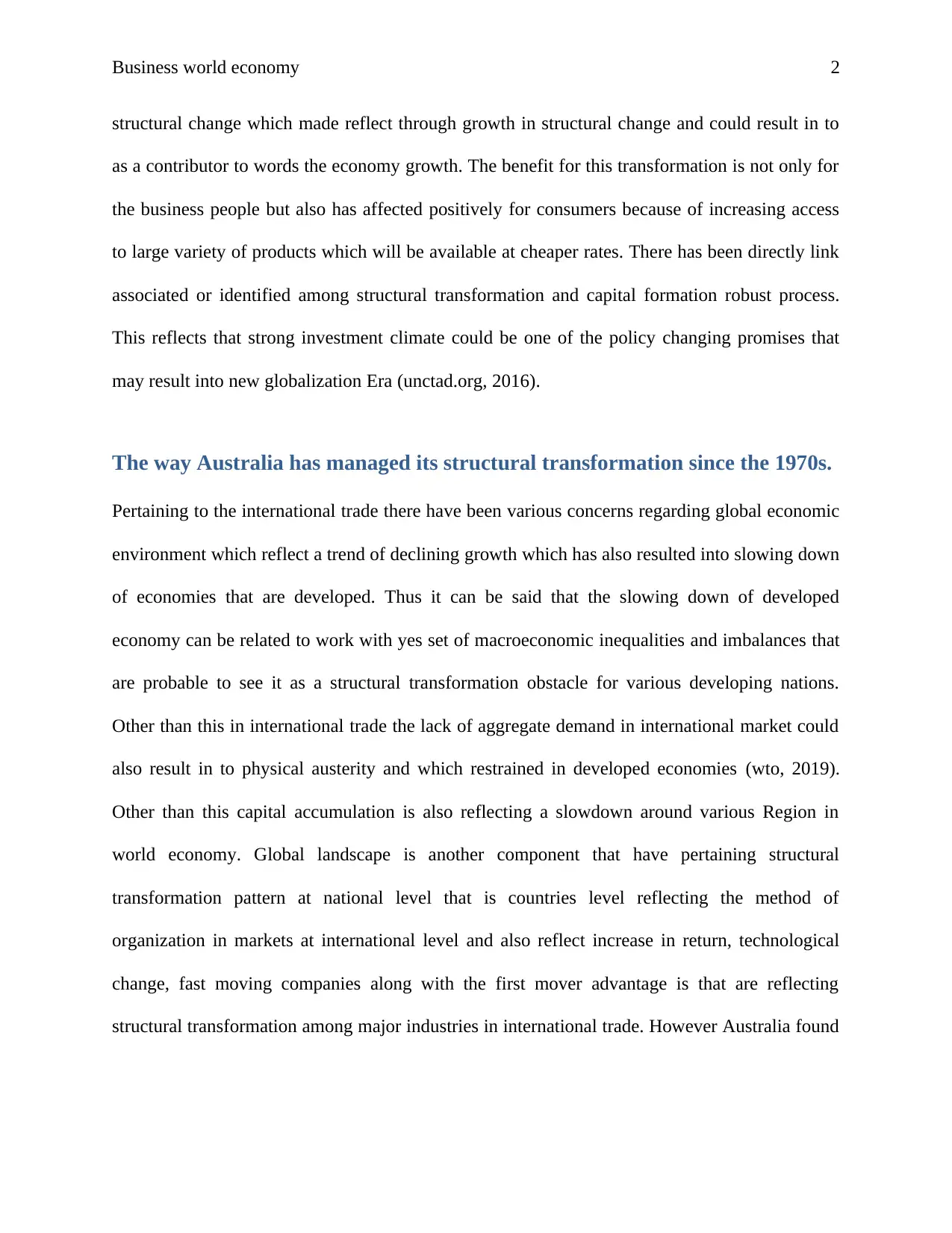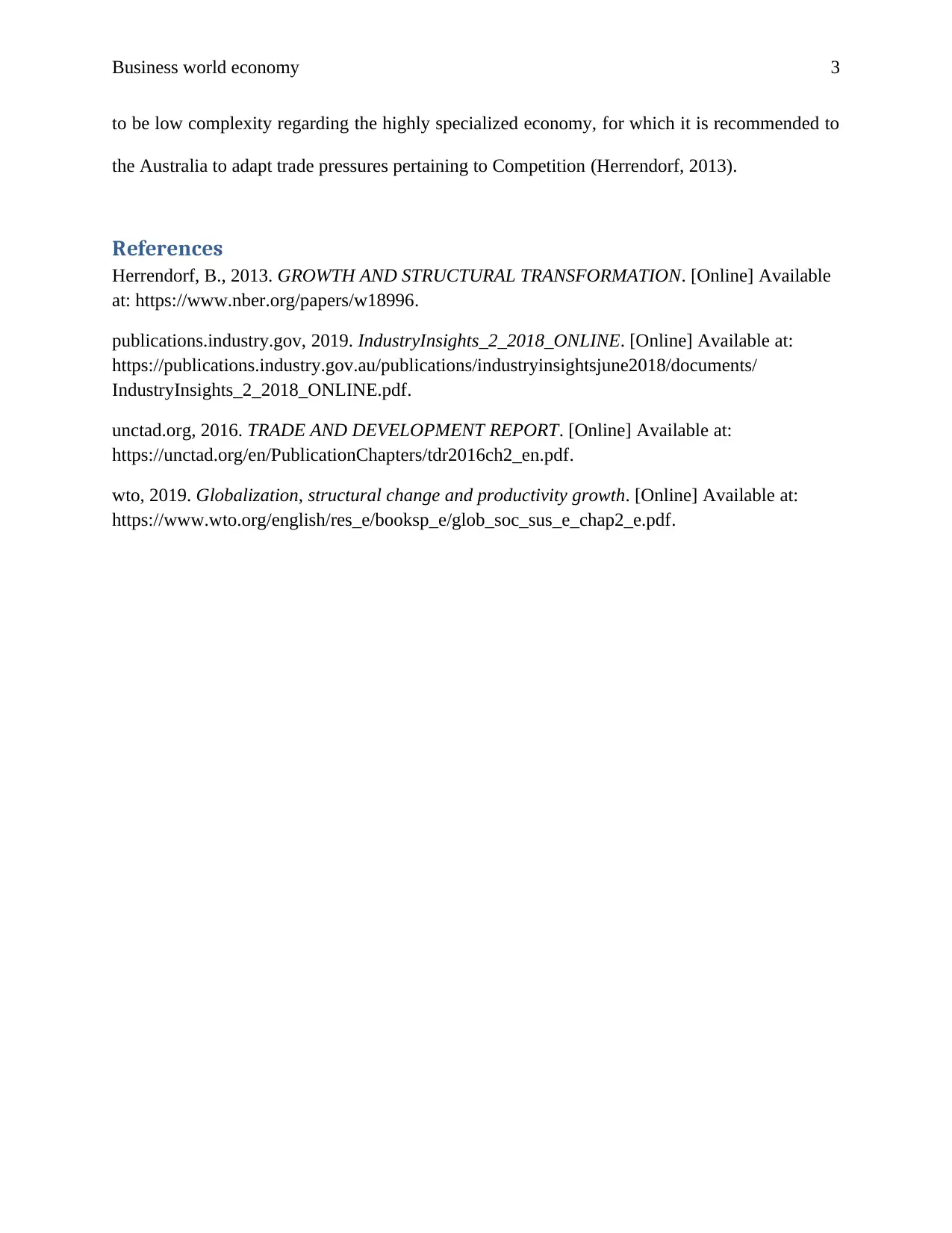Key International Trade Transformations: Australia's Economy Analysis
VerifiedAdded on 2022/09/30
|4
|702
|16
Report
AI Summary
This report examines the key international trade transformations experienced by Australia since the 1970s, highlighting major shifts driven by increasing economic efficiency, a rise in product variety with lower prices, and expanded marketing opportunities. Australia's proximity to Asia and its focus on primary exports to China are significant. The report also identifies the growing demand for service exports. Australia's international trade accounts for almost 40% of its economy, with key strengths in coal, iron ore, and LNG. The government plays a major role in facilitating structural change and lowering trade barriers. Challenges include the limited range of Australian exports and the country's distance from global markets. Structural transformation, defined as reallocating economic elements across sectors, is analyzed, along with its benefits for businesses and consumers. The report discusses how Australia has managed its structural transformation, considering global economic trends, capital accumulation, and the need for Australia to adapt to trade pressures and competition, as well as the country's specialization in mining and agriculture.
1 out of 4











![[object Object]](/_next/static/media/star-bottom.7253800d.svg)